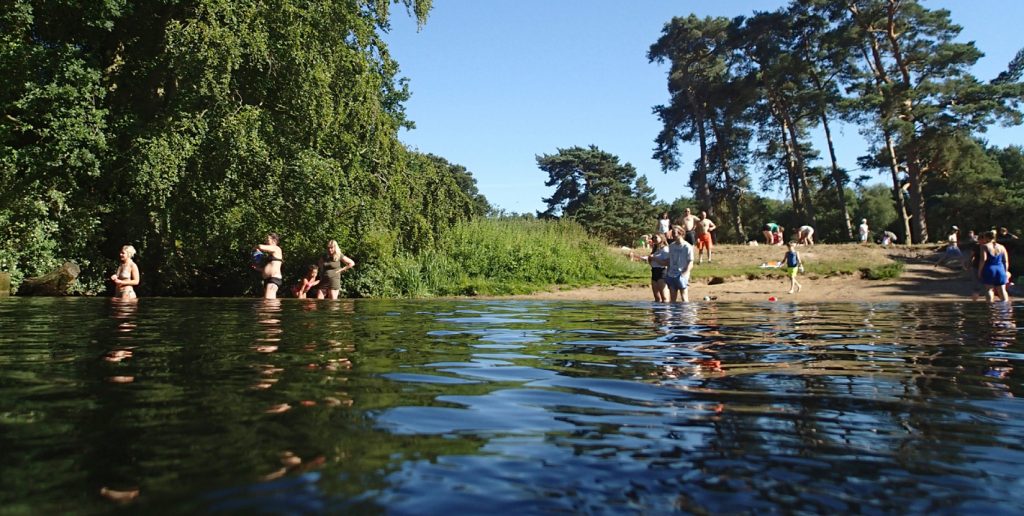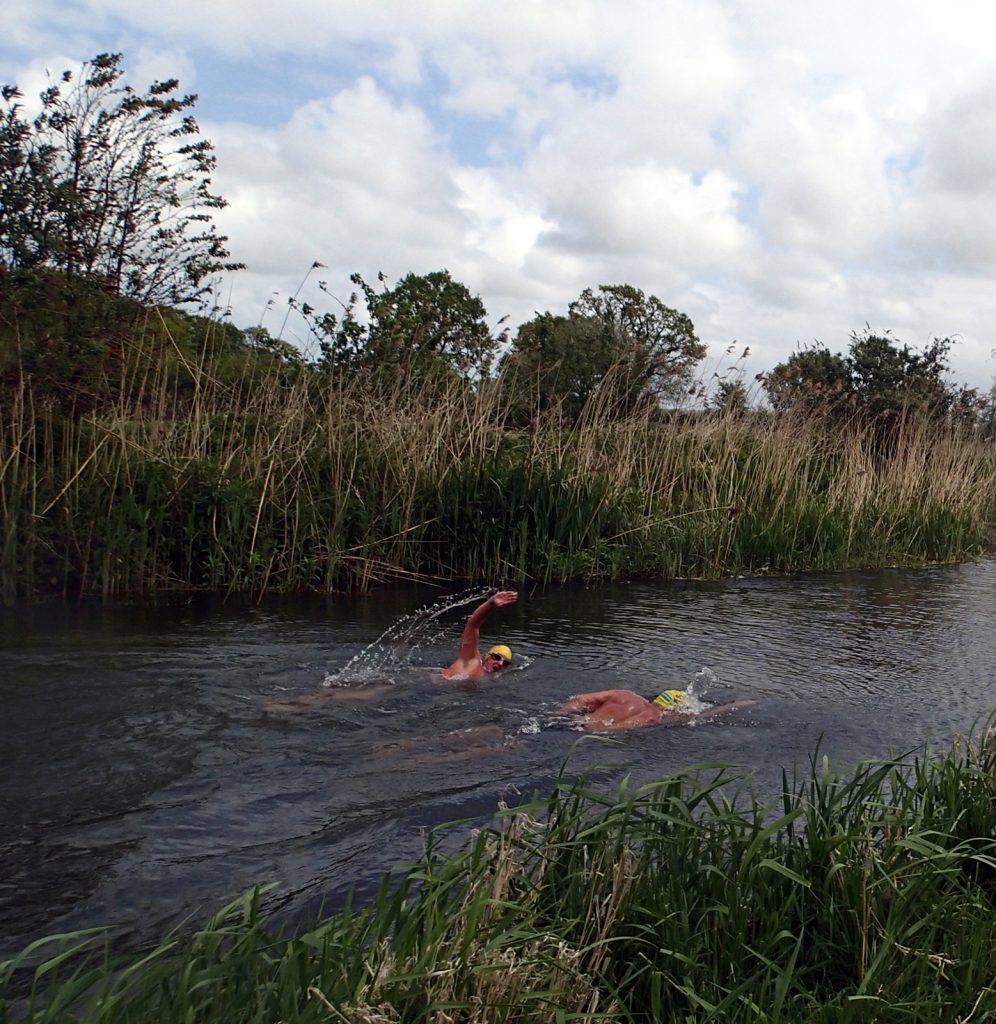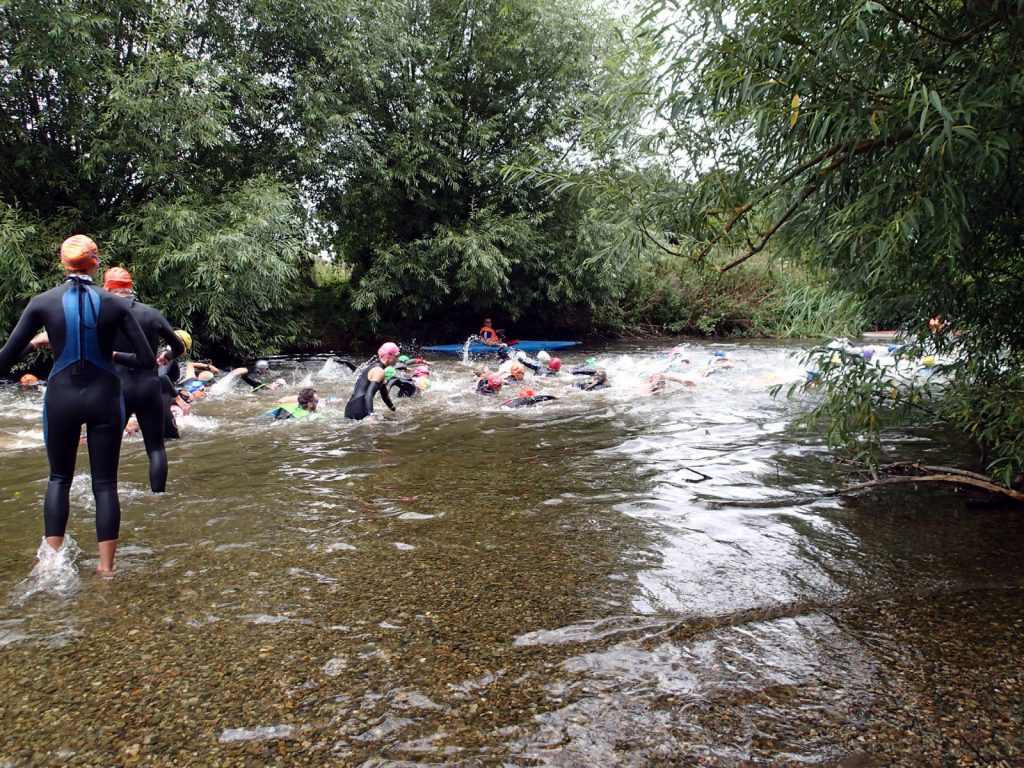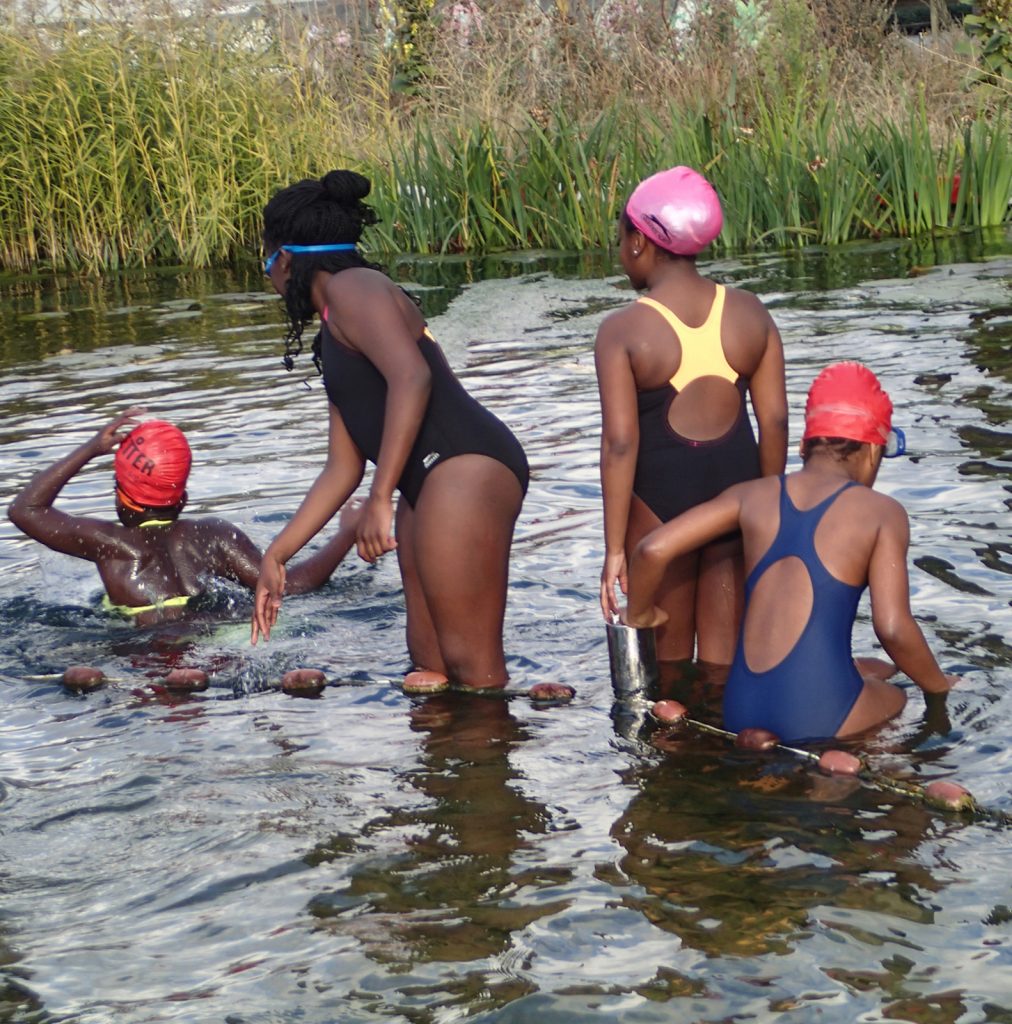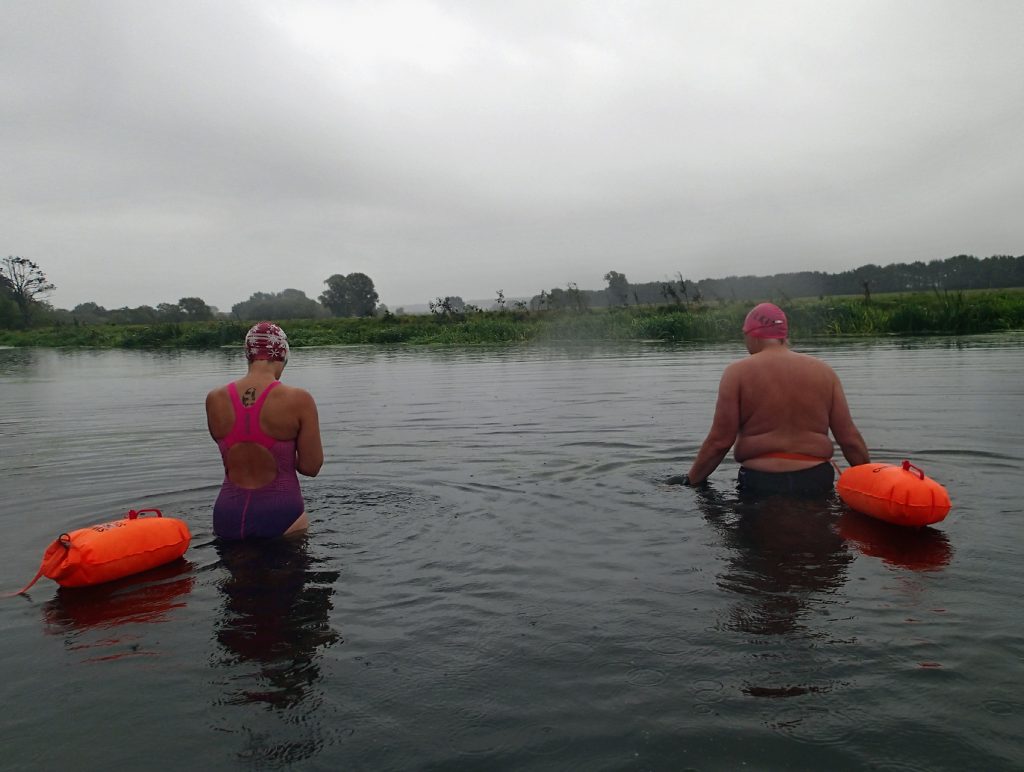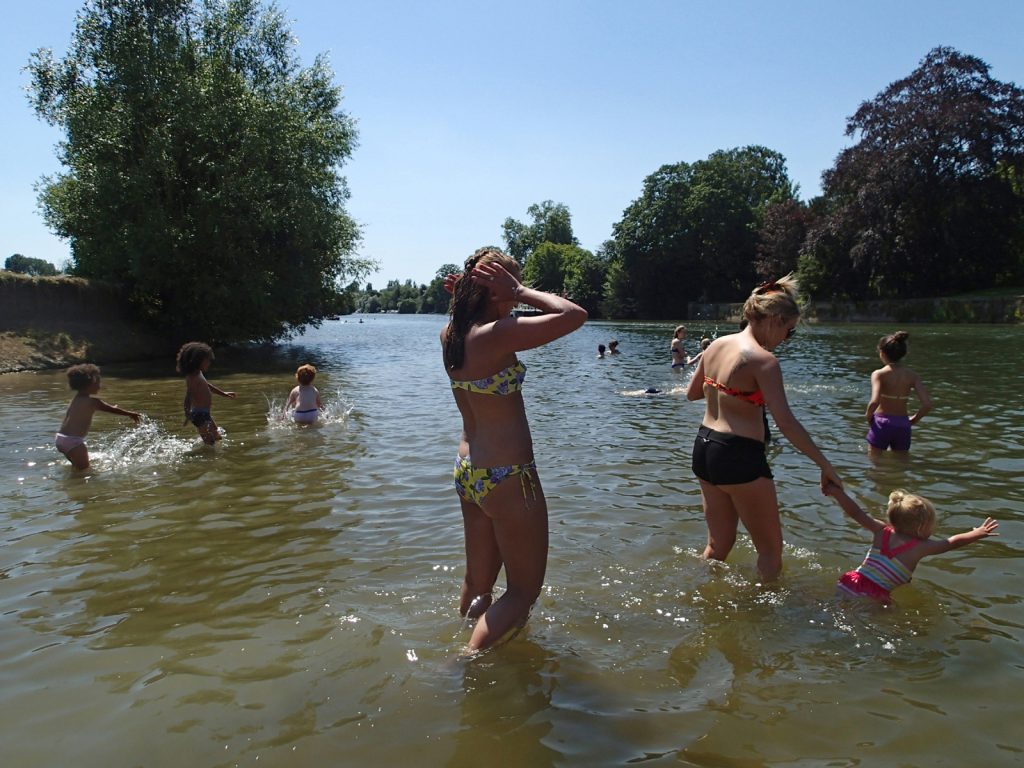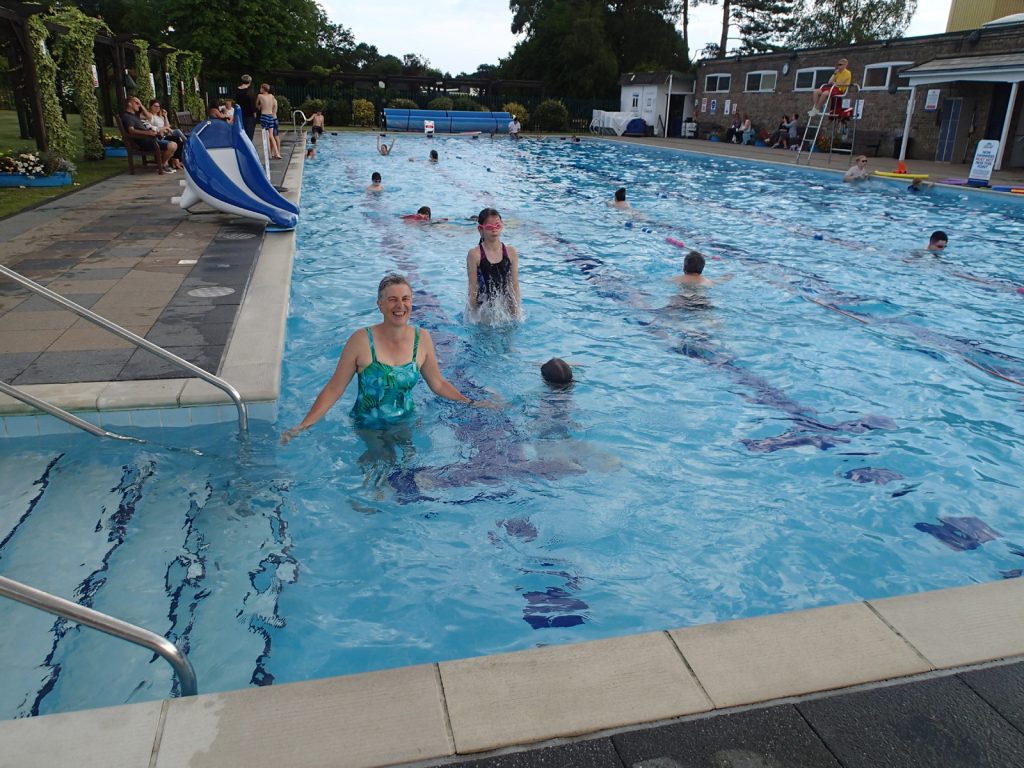You might be a keen swimmer in swimming pools and lidos and want to move to swimming in open water instead, or you might be just starting and prefer to swim in natural outdoor water. Or you might be a parent wanting to introduce your children to outdoor swimming and to keep them safe. Here are some pointers and sources of advice. (Or download this note Getting started in open water outdoor swimming (Word.doc, 4 pages)
What’s it called?
‘Open water’ means anywhere that isn’t an indoor or outdoor formal swimming pool, but the term is more often applied to organised events or venues.
‘Wild swimming’ generally means outdoors and not organised, though in fact people do organise swimming meets, treks, swimming walks, and informal gatherings.
‘Outdoor swimming’ means anything outdoors, including lidos.
Some say we should just call it ‘swimming’!
It’s not new – people have always swum in their local rivers, with young people often keeping the tradition going – but it has become more widely popular in recent years.
There are several organisations, probably the biggest being the Outdoor Swimming Society (OSS), which brings together all sorts of outdoor swimmers and campaigns for the freedom to swim. OSS makes it clear that everyone swims at their own risk and needs to do their own risk assessment, and provides advice to help them do so.
What to consider
Even experienced swimmers can benefit by being aware of hazards and issues for outdoor swimming. You can find plenty of advice to read, but the best way to learn is from others, either at organised events or by informally linking up with other swimmers.
How to start and where to go
Many people start out by going to an organised open water event or venue.
Find organised outdoor swimming venues and events on Outdoor Swimmer website, or search the Internet or social media.
Some like to start by going to organised wild swimming treks and events, such as Canoeman or Swim Trek. Some join more informal groups, including local Outdoor Swimming Society groups, generally on Facebook. OSS have a list of many wild swim groups.
It is generally better not to swim alone, and meeting up with others is a good way to get advice and to learn about where to swim in your area. It is possible to link up with others in the same area, through OSS or other organisations or social media.
If you decide to explore on your own or with friends, you can use the wild swim maps to find places that others swim. Choose popular places if you’re going on your own so at least you might not be the only person there. Seek local advice or advice on the swim listing about that place, but do your own at risk assessment by learning about risks and how to deal with them. Here is one checklist, Swimming safety checklist and advice on RALSA website
There are crowdsourced maps, including(currently unavailable https://wildswim.com/ and) http://www.wildswimming.co.uk/, and books and articles on places to swim. See my Links page
All OSS and other outdoor swimming groups and websites make it very clear that you swim at your own risk and do your own risk assessment.
The Outdoor Swimming Society website includes masses of information about staying safe and learning about your local river or other water, and it is a very good way to hook up with other people. In addition to the website, there is an active Facebook OSS group, an OSS Inland Access Group, and many local OSS Facebook groups. Many of these are closed, but you can apply to join.
See my Places pages for places I have swum, mostly in Eastern England.
More on sources of information and advice under Issues, Safety, below.
When to start
If you’re concerned about cold and want to swim with others, the best time to start is in the middle of summer, and then to continue into the autumn and winter if you want to. Though heed the safety advice on cold, as the water can still be chilly at the height of summer. But you can start at any time.
What to wear and what you might need
- It is best to wear something on your feet, such as swim shoes or old plimsolls. Stones can be sharp, there might be abandoned fishhooks or litter, and you might have to get out of the river somewhere different to where you went in.
- A brightly coloured swim hat is a good idea to make you visible – essential in areas with boats – and to keep you warm.
- Some use a tow float, especially where there are boats, as they make you more visible. They are brightly coloured and inflated, sometimes with enough room to put clothes, phones in, and you can hold onto them – though they are not a safety device, explained here on the OSS website.
- Many use goggles, though some people find it difficult or don’t want to put their face in the water when swimming outdoors.
- Wetsuits give buoyancy and keep off some of the cold, and you can wear neoprene gloves, boots or socks, hats. Some wear wetsuits all year round, others only in the depths of winter, and some never wear them.
- Some people choose to swim without swimsuits at all, known as skinny-dipping. The OSS Swimmers Code suggests being considerate about other people if you choose to do this.
- If you don’t have a tow float or similar that can hold your clothes, you need to think about where to put them, especially if going for a longer swim.
Some issues
Access and legality
In England, the legal position has some grey areas. Although it is legal to swim in any ‘navigable’ waters, which means waters that are open to boats, some waterway authorities ban it. As long as there is access to the water from a public footpath or accessible open space, without trespassing, you should be able to swim. And in some places there is a long established historical tradition of swimming.
Because of a lack of understanding or clarity about the law, some landowners ban swimming without good safety reasons, though this is beginning to change. Swimming groups are campaigning for more access, including the River and Lakes Swimming Association (RALSA). The Outdoor Swimming Society has published a very useful guide to access to inland beaches, with advice for landowners & managers, and information for anyone who wants to see more swimming in lakes, rivers, and other inland waters. Read about and download the OSS Guide to Inland Bathing Areas. The Visitor Safety Group brings together landowners who want to minimise restriction to access as long as safety is maintained. This is information for landowners on liability and their role.
There is advice from OSS, Is it Legal and RALSA, Legal considerations. The OSS Swimmers Code advises you not to trespass, though note that it is a civil rather than a criminal offence. As with safety, it is your responsibility to check.
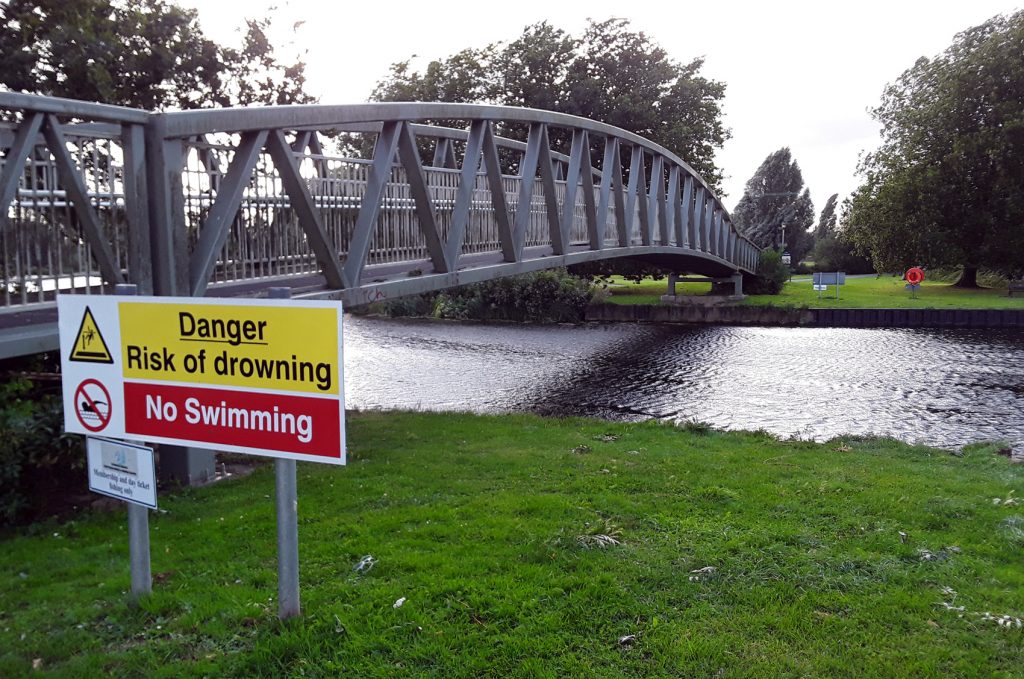
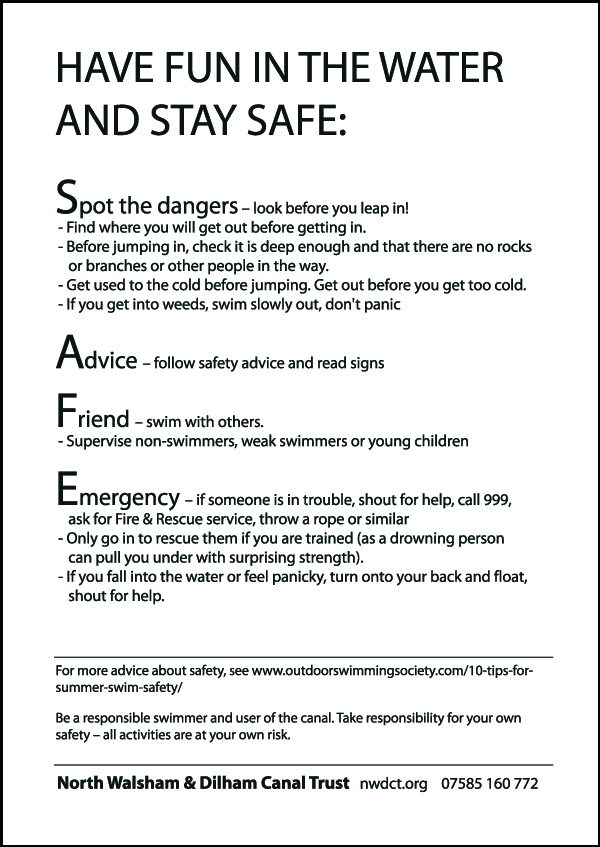
Safety, including cold
There is a wealth of advice on swimming safely, and I’ve compiled this on my website, with further links to a wide range of sources of advice on safety and getting started.
OSS publishes advice on a wide range of situations on the Survive section of the OSS website, and there is concise guidance on safety and cold on the Outdoor Swimmer website, which also has advice on the difference between pool and open water.
See alsothe loneswimmer website and the River and Lakes Swimming Association website
Here’s my safe outdoor swimming checklist:
- Be aware of the cold – don’t jump in; don’t stay until you are very cold; swim close to shore so you can get out if you get cold; get dry and warm quickly after your swim; be aware of ‘afterdrop’
- walk into the water: don’t jump or dive until you’ve checked for obstructions and the depth and know how cold it is
- know where you can get out of the water, especially if there is a current
- look out for obstructions – rocks, logs, weeds – and avoid them
- check whether the water is clean and take precautions
- look out for boats, avoid them, make sure they see and avoid you
- wear shoes to swim to protect your feet and make you feel more comfortable
- check for currents – if a river will wash you downstream make sure you know where you can get out further downstream, or if swimming across the river swim up against the current first and let it send you down
- avoid weirs
- be careful in waterfalls
- don’t swim alone, or take extra precautions if you do
- if you can’t swim well don’t go in water out of your depth
- supervise non-swimmers, weak swimmers or young children
- if you feel panicky and are having trouble breathing, breathe out slowly and try to relax
- learn to Float to Live – RNLI advice
- don’t let others persuade you to do something you don’t feel is safe for you
- don’t mix alcohol and swimming
- if you see someone in trouble in the river, here’s what to do: call for help, throw a rope or similar, and only go in to rescue them if you are trained (as a drowning person can pull you under with surprising strength).
Swimming and children and young people
In the heat of summer you can find many families, children and groups of young people swimming and enjoying the water, for example at St Helens in Thetford Forest. But for many families nowadays swimming outdoors in rivers or lakes is unfamiliar: we have been encouraged for the past 50 or so years to swim in lifeguarded swimming pools instead, and parents can be nervous.
I would argue that it is very important it is to introduce children to swimming outdoors and to teach them how to do it safely – how to judge a safe place, how it is different to a swimming pool in unpredictability and cold. Often a key factor in the rare but tragic drownings of young people in the summer is that they swim without understanding these things, and get into trouble through unexpected hazards or cold.
It’s also extremely important that there are relatively safe places where such swimming is allowed, as otherwise children and young people will find forbidden and more hidden places, making it a potentially more dangerous activity.
My advice is that we can all learn how to swim, and how to swim safely outdoors. We should take children when young to the water and teach them this, so they know how to stay safe and have fun. Parents have responsibility for the safety of children, even in a place with a lifeguard.
There is also Advice for adults and teenagers on Hung out to Dry website, and Advice for parents and children on that website. Article from Outdoor Swimmer on one young person’s outdoor swims
Breckland Outdoor Swimming project
I’m leading a project that will provide training sessions to introduce people of all ages and families to swimming safely outdoors in the Brecks area, Healing Waters. It is part of The Brecks Fen Edge & Rivers Landscape Partnership Scheme (BFER), supported by the National Lottery Heritage Fund. See the OS Brecks section of this website for updates, and you can sign up if interested.
Note compiled by Imogen Radford, updated August 2020. Please note that I have included information and advice that I believe to be accurate and helpful, but I take no responsibility for swimmers. All outdoor swimmers must be solely responsible for making their own assessment as to the risks of any sort of any particular swimming or related activity.
An earlier version of this note can also be downloaded (Word.doc, 4 pages)

